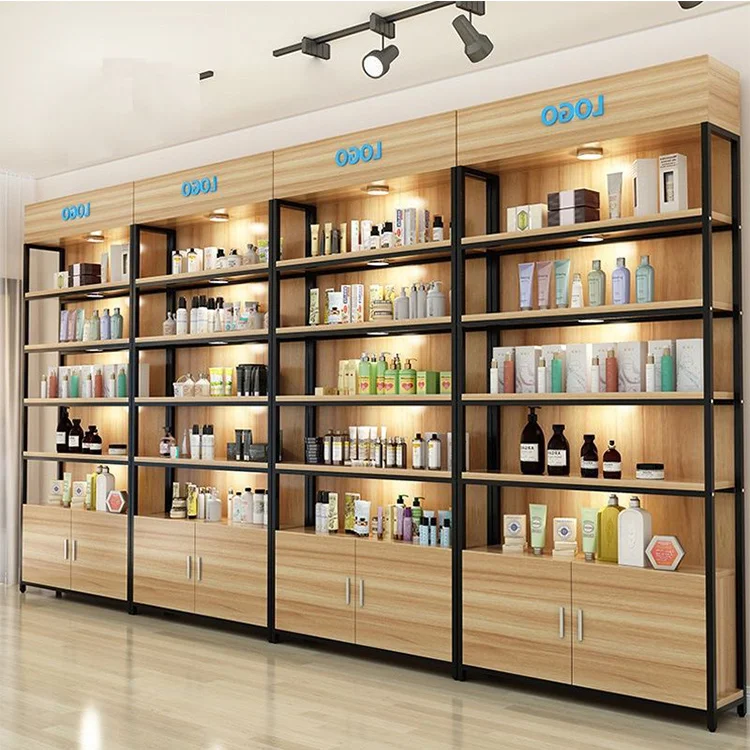Visual hierarchy is essential in crafting effective beauty product showcases, as it directs the customer's gaze toward high-demand products. By organizing display elements purposefully, retailers can highlight specific products, leading to increased customer interest and engagement. Strategic lighting enhances these efforts, where techniques like spotlighting emphasize key products, and ambient lighting establishes a warm, inviting atmosphere. According to retail studies, the implementation of effective lighting and visual hierarchy can significantly boost both customer engagement and sales, as it creates a dynamic visual experience that captivates shoppers.
Retailers benefit greatly from modular display configurations, allowing for swift adaptations to store layouts in response to seasonal trends or new product launches. Such flexibility enables the efficient use of space, accommodating the varying demands of inventory. For instance, beauty stores utilizing modular designs have reported improved sales metrics, demonstrating the tangible benefits of adaptable layouts. By adopting this strategy, stores can align their storage solutions with changing inventory needs, ensuring a seamless and effective use of space that maximizes sales potential without compromising on product accessibility or presentation.
The combination of steel and wood in retail display solutions offers a unique balance between aesthetic appeal and heavy-duty stability, making them ideal for high-traffic retail areas. Steel provides robust support, ensuring the durability needed for busy environments, while wood adds a warm, inviting visual element, enhancing the overall store ambiance. According to industry statistics, steel-wood hybrids outperform traditional display materials in terms of customer satisfaction and longevity. A case study involving major retailers like IKEA and Walmart demonstrates how steel-wood designs have effectively maximized floor space while maintaining structural integrity over large inventories. These hybrids not only fortify the displays but also contribute to the strategic Warehouse Rack layout, supporting enhanced customer engagement.
Acrylic and glass are increasingly favored in beauty product displays for their ability to create a luxurious shopping experience. These transparent materials not only provide an elevated aesthetic by highlighting the products but also complement the modern minimalist design trends that are popular in retail spaces. Research from the design industry indicates a growing preference for these materials due to their ability to enhance product visibility and brand perception. For instance, a survey conducted by Retail Design Institute shows that displays using premium materials such as acrylic and glass can boost brand recognition and consumer trust by over 30%. This aligns with the move towards clearer, visually appealing retail environments that showcase products in their most flattering light, contributing to customer satisfaction and brand loyalty.
Customizable gondola shelving is an essential solution for beauty product displays, offering significant flexibility to cater to diverse product types. This shelving is known for its ability to efficiently manage the placement of products in a retail setting, adjusting to the size and type of the merchandise on display. A study showed that stores implementing well-planned gondola shelving experienced a 15% increase in sales volume due to enhanced product visibility and accessibility. Retailers like Sephora have successfully adapted gondola systems to keep up with evolving merchandising strategies, highlighting the system's capability to support dynamic retail environments, increasing shopper engagement.

Wall-mounted cosmetic display units are highly efficient in maximizing floor space while enhancing visibility for featured products. These units allow retailers to highlight specific beauty items at eye level, thus increasing customer attention and improving sales chances. Experts note that this type of display is especially effective in niche beauty markets where space is at a premium. According to retail studies, stores that employed wall-mounted displays saw a 20% increase in sales of displayed products compared to floor-standing options. The efficient use of space and improved accessibility make wall-mounted displays an optimal choice for boutique settings.

Multi-layer double-sided racks are ideal for versatile product presentation, enhancing customer browsing and shopping experiences. These racks provide dual access, allowing customers to view products from either side, increasing engagement and potentially driving sales. Studies show that implementing double-sided racks can lead to an increase in product accessibility, resulting in heightened customer interest and up to a 30% sales boost. Beauty retailers like Ulta have leveraged this solution to successfully improve their store layouts, offering an immersive shopping experience and encouraging customers to explore a wider range of products.

Understanding warehouse rack principles can significantly benefit beauty retailers by improving their storage efficiency and product accessibility. Warehouse racks are designed to maximize space utilization and streamline product organization, a concept that can be adapted to beauty retail environments. This adaptation can lead to more efficient inventory management, ensuring that products are arranged systematically for easy access and better display. Studies show that effective inventory management, influenced by warehouse principles, can lead to reduced costs and optimized display layouts, which are crucial for small retail spaces where every square meter counts. According to industry research, applying these principles helps maintain concise inventory control, preventing overstocking and promoting better product turnover, ultimately enhancing the shopping experience.
Adjustable display heights offer a dynamic advantage for accommodating seasonal product lines and promotions, enhancing retail adaptability. This flexibility allows retailers to present their products in a visually engaging manner that aligns with current marketing cycles. By adapting displays based on seasonal changes, retailers can optimize the visibility of their featured items, making them more appealing to consumers. Statistical evidence suggests that sales tend to improve when displays are customized to reflect seasonal variations, as products become more relevant to consumers' immediate interests. Experts emphasize the importance of creating adaptable retail environments that can quickly respond to fluctuating market demands and promotional strategies, thereby maximizing sales potential.